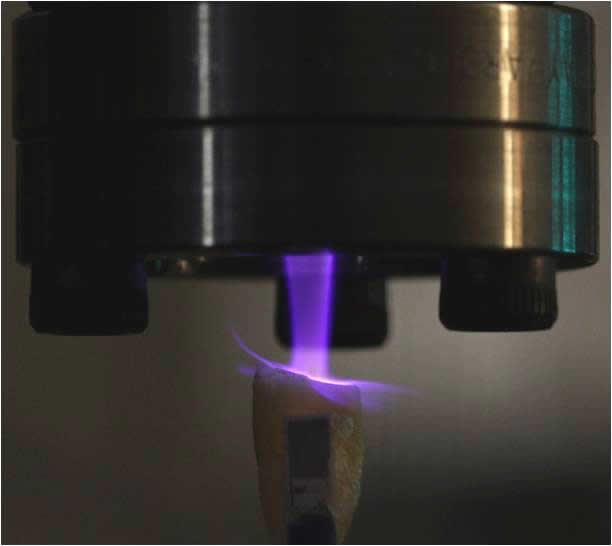Low-temperature Atmospheric pressure Plasma Jets
Non-equilibrium atmospheric-pressure plasma has emerged as a novel technology for biomedical and environmental applications. The important characteristic of these plasmas is their ability to produce and enhance chemical reactivity with minimal heating. This property is especially attractive for biomedical applications where heat-sensitive tissue is involved.
Check out some of our papers related to fundamental studies of cold plasmas:
- 1. C. Jiang and C. Carter, “Absolute atomic oxygen density measurements for nanosecond pulsed atmospheric pressure plasma jets using two-photon absorption laser-induced fluorescence spectroscopy,” Plasma Sources Science and Technology, 23(6): 065006, 2014. DOI: 10.1088/0963-0252/23/6/065006.
- 2. C. Jiang, J. Lane, S. Song, S.J. Pendelton, Y. Wu, E. Sozer, A. Kuthi, and M.A. Gundersen, “Single-electrode He microplasma jets driven by nanosecond voltage pulses,” Journal of Applied Physics, 119 (9) 083301, 2016. DOI: http://dx.doi.org/10.1063/1.4942624.
- 3. C. Jiang and S. Song, “Ignition and dynamics of nanosecond pulsed helium streamers over a water electrode,” Japanese Journal of Applied Physics, 56, 046101, 2017.
- 4. S. Song, J. L. Lane and C. Jiang, “Comparison study of spatiotemporally resolved emissions of nanosecond pulsed microplasma jets”, IEEE Transactions on Plasma Science, 43(3), 587-593, (2018).
- 5. S. Song, E. B. Sozer, and C. Jiang, “Effects of pulse width on He plasma jets in contact with water evaluated by OH(A–X) emission and OHaq production,” Japanese Journal of Applied Physics, 58, no. 6, 2019.
- 6. C. Jiang, J. A. Miles, J. Hornef, C. Carter, and S. F. Adams, “Electron densities and temperatures of an atmospheric-pressure nanosecond pulsed helium plasma jet in air,” Plasma Sources Science and Technology, Accepted for publication, 2019.
